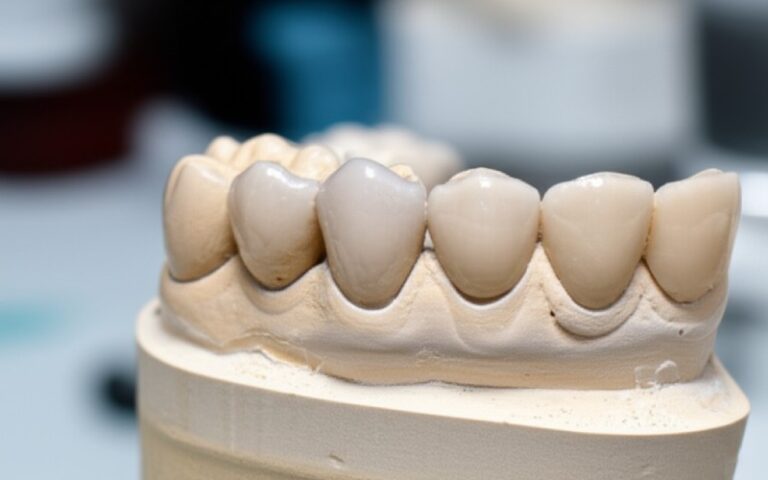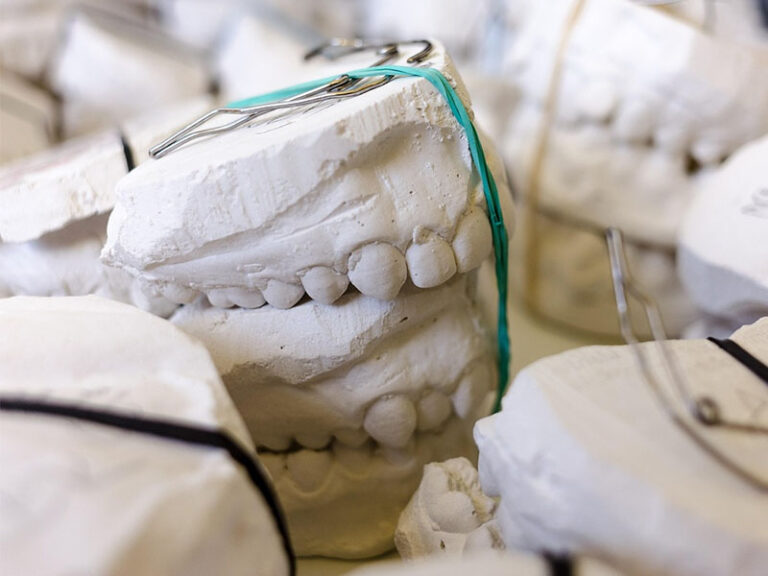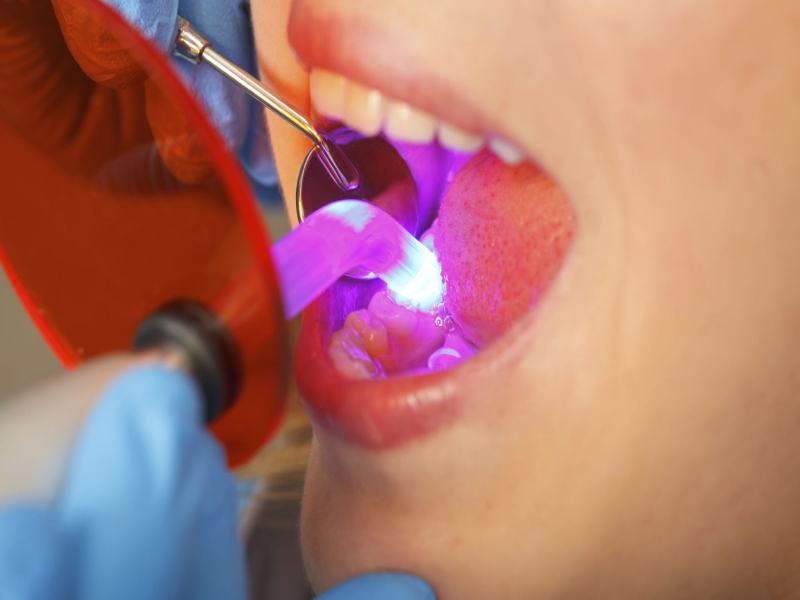
Besoin de soins dentaires ? Tout ce que vous devez savoir sur le collage dentaire composite
This article tells you everything you need to know about a great option called dental bonding. It is a popular choice for fixing small issues without a lot of fuss or money. We will look at what tooth bonding is, how it works, and how it compares to options like a veneer. This guide will help you decide if a composite bond is the right choice to improve the appearance of your smile.
Table des matières
What Exactly is Dental Bonding?
So, what is this procedure? Dental bonding is a cosmetic way to fix small flaws on your teeth. It is a very common cosmetic dental procedure. Your dentist uses a special material called a tooth-colored composite resin to make the fix. Think of this resin like a special putty. Your dentist can shape it perfectly to look just like your real tooth. After it is shaped, a strong bond is created between the resin and your tooth.
The composite resin material is the magic behind dental bonding. This amazing material comes in many different shades. Your dentist will look closely at your teeth and pick a color that perfectly matches the color of your natural teeth. This is so important because it makes the repair look real. When done right, no one will even know you had work done on your tooth. Bonding is one of the easiest and fastest cosmetic dental treatments you can get. It is a fantastic way to get a great result in a short time.
What Kinds of Problems Can Tooth Bonding Fix?
You might be wondering if your specific problem can be fixed with tooth bonding. Dental bonding is used for many different things. Most often, bonding is used to fix chipped teeth. That little chip that bothers you can often disappear in a single visit. It can also fix small cracked teeth. The resin fills in the crack and makes the tooth strong again.
But that is not all. If you have small gaps between teeth, dental bonding can close them. Your dentist can add a little bit of composite material to each tooth to close the space. Bonding can also be used to cover up discolored teeth. Sometimes, one tooth is darker than the others and does not respond to teeth whitening. A thin layer of resin can cover the stain. Bonding is also used to make teeth appear longer or change their shape. This helps them match the surrounding teeth and makes your smile look more even. This simple procedure can help you feel more confident.
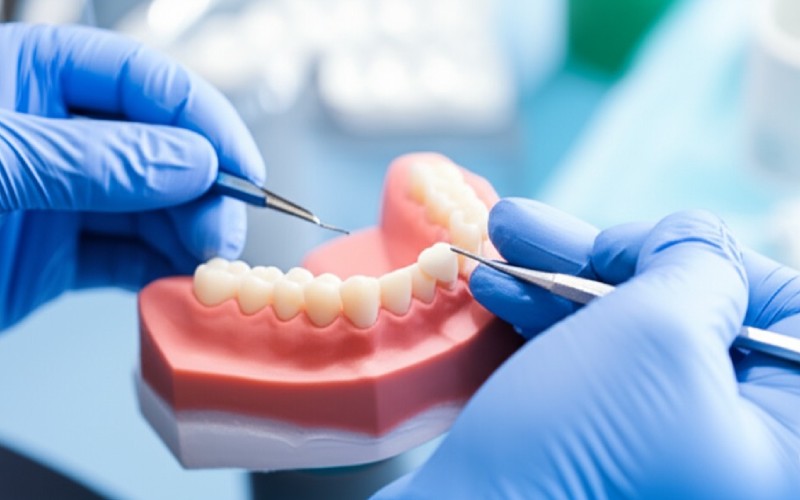
What are the Main Advantages of Dental Bonding?
The advantages of dental bonding are very clear, especially when you need a quick fix. First, it is fast. A dental bonding procedure often takes just one visit to your dentist. For a small chip, you could be in and out of the chair in under an hour. You can walk in with a problem and walk out with a brand-new smile.
Second, it is much cheaper than other options. Treatments like porcelain veneers or crowns can be very expensive. Dental bonding is a much more affordable choice. Another great thing is that bonding is a simple process. It is one of the least invasive dental procedures. Your dentist does not need to remove much of your natural tooth. Most of the time, you do not even need a shot to numb the area. The dentist just works on the surface of the tooth. This makes it a great choice if you are nervous about dental work. Bonding offers a great result with little stress.
Is Dental Bonding Better Than a Veneer or Crown?
This is a very common question. It is important to know the difference. Both dental bonding and facettes dentaires are meant to make your teeth look better. A veneer is a very thin shell, usually made of porcelain, that covers the entire front of a tooth. Porcelain veneers are very strong and do not stain easily. They can last for a very long time. However, they cost a lot more than a bond. A veneer is also made in a laboratoire dentaire, so it takes at least two visits to your dentist to get them.
Bonding doesn’t require removing much of your tooth enamel. For a veneer, the dentist has to shave down a thin layer of your tooth to make room for the shell. With bonding, your tooth stays mostly whole. This is why compared to veneers, dental bonding is a much more conservative dental treatment. For small fixes like a tiny chip or a small gap, a bond is often the better choice. For bigger problems, like a very crooked or broken tooth, your dentist might suggest veneers or crowns.
How Does the Dentist Perform the Dental Bonding Procedure?
The dental bonding procedure is pretty straightforward. You will find it is an easy process to go through. First, your dentist will examine your teeth to make sure bonding is the right choice. Then, they will use a shade guide to pick the perfect composite resin color to match your smile. This step is very important for a natural look.
Next, your dentist prepares the tooth. They put a special gel on the tooth to make the surface a little rough. This sounds strange, but it helps the bonding material stick much better. Then, they apply a bonding agent. After the tooth is ready, the dentist applies the soft composite resin. This resin is like clay, so they can carefully shape it to fix the chip or fill the gap. Once it looks perfect, a special blue light is used to harden the resin. This light makes the resin hard and creates a strong bond. Finally, your dentist will trim and polish the new bonded teeth so they shine just like your natural teeth. The whole bonding process for one tooth is usually done in 30 to 60 minutes.
How Do I Prepare for the Bonding Process?
One of the great things about tooth bonding is that it requires very little preparation from you. You do not need to do much before your appointment. The most important thing is to make sure your teeth and gums are healthy. Your dentist will check your overall oral health before starting any cosmetic work. If you have cavities or gum disease, those issues will need to be fixed before the cosmetic bonding.
It is also a good idea not to use any teeth whitening products right before your appointment. Whitening can change the surface of your teeth and might affect how well the bond sticks. Also, your dentist needs to match the resin to the current color of your teeth. If you whiten your teeth first, the bond might not match if the color fades later. So, just keep your teeth clean by brushing and flossing, and let your dentist handle the rest. Dental bonding involves very little prep work, which makes it very convenient.
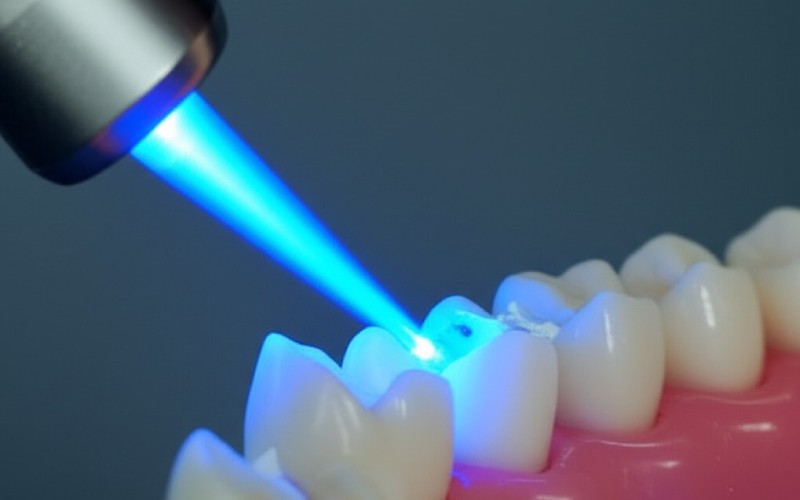
How Do I Choose the Right Dentist for My Bonded Teeth?
Finding the right person to do your dental bonding is very important. While many dentists can do it, you want someone with a good eye for detail. This is because bonding is part art and part science. I always tell people to look for a dentist with a lot of experience in cosmetic dentistry.
Ask the dentist if you can see before-and-after photos of their work. This will show you the quality of their bonding procedures. A good dentist will be proud to show you their results. You can often find a great cosmetic dental expert at a trusted dental center. Read online reviews and ask for recommendations. A good dentist will talk with you about the whole process. They will make sure you feel comfortable and agree that bonding is the right solution for your specific dental issues.
Quelle est la durée de vie du collage dentaire ?
This is a key question everyone asks: how long bonding will last? The answer is that dental bonding last for a good amount of time, but it is not a permanent solution. With good dental care, you can expect your bond to look good for many years. Typically, bonding can last anywhere from 3 to 10 years.
The life of your bond depends on a few things. It depends on how many teeth were bonded and where they are in your mouth. A bond on a front tooth that you use to bite into apples will be under more stress than a bond on the side. The composite resin used is strong, but it is not as strong as your real tooth. Dental bonding may need to be touched up or replaced over time. Your dentist can check on the bond during your regular checkups and let you know when it is time for a repair.
How Do I Take Care of My Bonded Teeth?
Taking care of your new smile is easy. You just need to treat your bonded teeth with a little extra care. First, practice good oral hygiene. This means you need to brush your teeth at least twice a day. You should also floss every day. Good dental care helps keep your teeth healthy, and it also helps the bond look great for a long time. This is the best way to protect your investment and your oral health.
There are also a few things you should try to avoid. The resin material can stain over time, more so than your natural teeth. So, it is a good idea to limit things like coffee, tea, red wine, and smoking. Also, be careful about biting on very hard things. Do not chew on ice, hard candy, or your fingernails. And please avoid using your teeth to open packages. This can easily put a chip in the bond or even break it. If you are careful, your bond will look beautiful for years.
Is Cosmetic Bonding the Right Choice for Me?
So, how do you know if this is the right choice for you? Dental bonding is a simple and wonderful choice for many teeth with minor flaws. If you have small problems like a chip, a small gap, or a stain, dental bonding is most often used. It is the perfect procedure that uses a tooth-colored resin for a quick and affordable fix. If you need dental work but do not want to go through a big, expensive procedure, you should ask your dentist about a dental bonding treatment.
However, dental bonding is not the best choice for every problem. If you have a very large break in a tooth or are dealing with missing teeth, you will likely need something stronger. In those cases, your dentist might suggest facettes en porcelaine et implants dentaires. It is also important to know that dental insurance may not pay for it, since bonding is a cosmetic procedure. The insurance coverage for bonding varies, so it is best to check with your provider. Your dentist will help you decide if composite bonding is right for your smile.
Ce qu'il faut retenir
- Dental bonding is a fast and affordable way to fix small problems like a chip, gap, or stain.
- It uses a tooth-colored composite resin that your dentist shapes to look like a natural part of your tooth.
- The bonding process is simple and is usually finished in just one visit to the dentist.
- It costs less than other cosmetic dentistry procedure options like dental veneers or crowns.
- To make your bond last, you must brush your teeth at least twice a day and avoid biting on hard objects.
- Talk to your dentist at your local dental center to see if teeth bonding is one of the right solutions for you.


